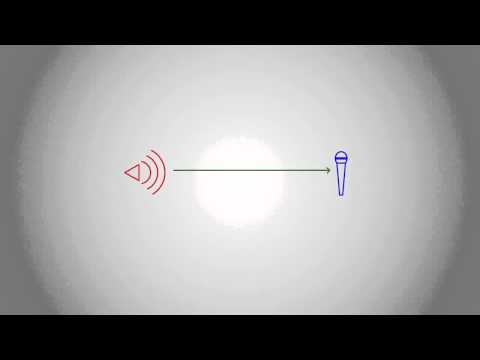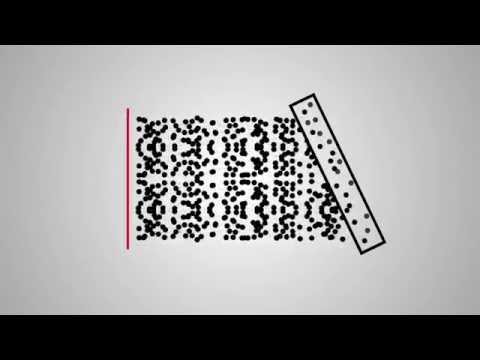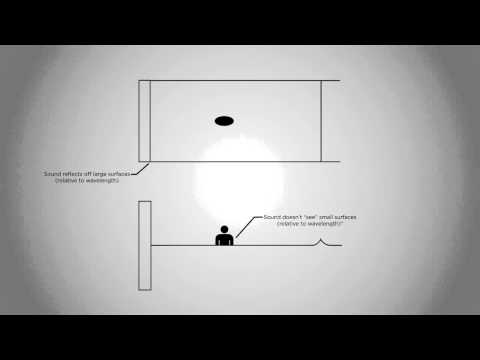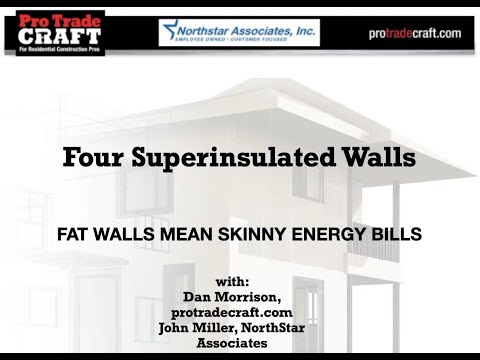Materials absorb or reflect sound, but not all frequencies are the same
There's a way to quantify how much sound is reflected in the room. Yes, we use a metric called the absorption coefficient and denoted with the Greek lowercase letter alpha.
The absorption coefficient is one of those measurements that ranges between 0 and 1. One means that no sound energy is reflected; everything is either absorbed or transmitted.
An open exterior window has an absorption coefficient and alpha of 1 because none of that sound that impinges on the open window plane returns to the room.
Then a 0 means 100% of the sound is reflected. What is an example of building material with an absorption coefficient of 0?
Reaching a point where absolutely nothing is either absorbed or transmitted is impossible but we come close with our smooth concrete example here. The absorption coefficient of smooth concrete is 0.02. Two percent of the sound energy is transmitted or absorbed so 98% of the sound energy is reflected. That's a lot.
Yep, and when we apply our fabric-wrapped glass fiber and we mount it on the furring with airspace behind it, the absorption coefficient is about 0.95, though that would be on the high end of the range so only 5% of the sound energy is reflected.
An effective absorber will have a sound absorption coefficient greater than 0.75, so more than 3/4 of the arriving sound is absorbed or transmitted—taken out of the room.
An effective reflector will generally have a sound absorption coefficient of less than 0.2 zero, so at least 80% of the arriving sound is reflected. Remember that the proportion that is transmitted reflected and absorbed varies across the frequency spectrum, so the numbers we've been using here are shortcuts.
In reality, a material will have a different sound absorption coefficient value at each octave band. But there is a single number available—something that describes the performance across the spectrum. There's almost always a single number available to summarize performance across frequencies.
In this case, it's called the noise reduction coefficient, or NRC. It is calculated by simply taking the average absorption coefficient across for mid-frequency octave bands. And, as with almost all the single number metrics, it fails to be useful and can be downright misleading.
In the presence of the low-frequency noises associated with mechanical noise, electric amplification, and even unamplified music performance, many materials—sound reflective in the middle frequencies—absorb sound in the low frequencies.
So when do we use more sound absorbing material? We add sound-absorbing material if we have excessive reverberance (especially for speech intelligibility reasons).
An architecture student designed this cafeteria without acoustic consideration and simulated the oral environment which sounds something like this: (Plays recording of voice).
And with the addition of sound absorption as well as some acoustically-irrelevant daylighting changes make it sound like this: (Plays recording of voice).
That's a really big difference both visually and aurally. In practice adding more sound-absorbing material to a room with some already existing quantity of sound-absorbing material, affects the room only modestly. But adding even a little sound-absorbing material to a room with almost no existing absorption leverages substantial changes to the acoustic character of the space.
We also use sound absorption to nullify an acoustic defect like the echo that smacks off of the rear wall of a long room. Coating the offending surface with fuzz fixes the offending reflection because so little sound is reflected more on that later.
—This is the second part of a four-part series on architectural acoustics. Last time we looked at How Building Materials Affect Sound Transmission.











